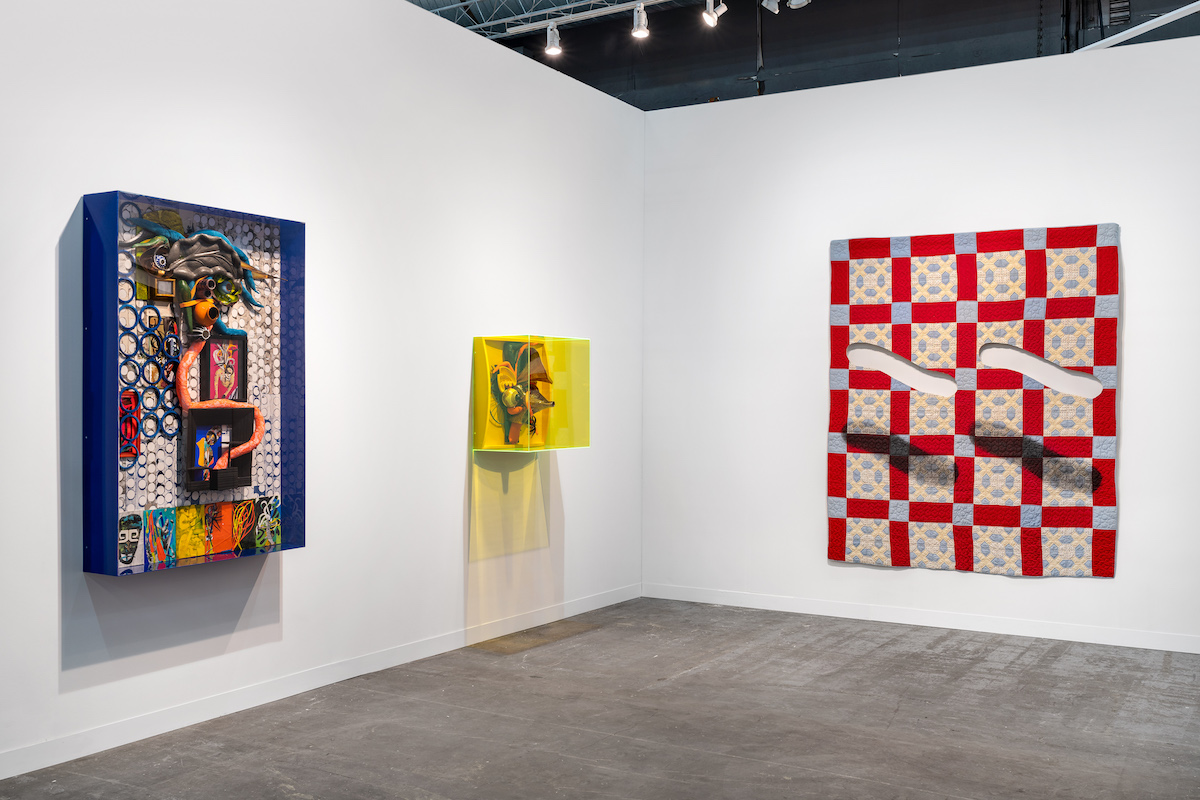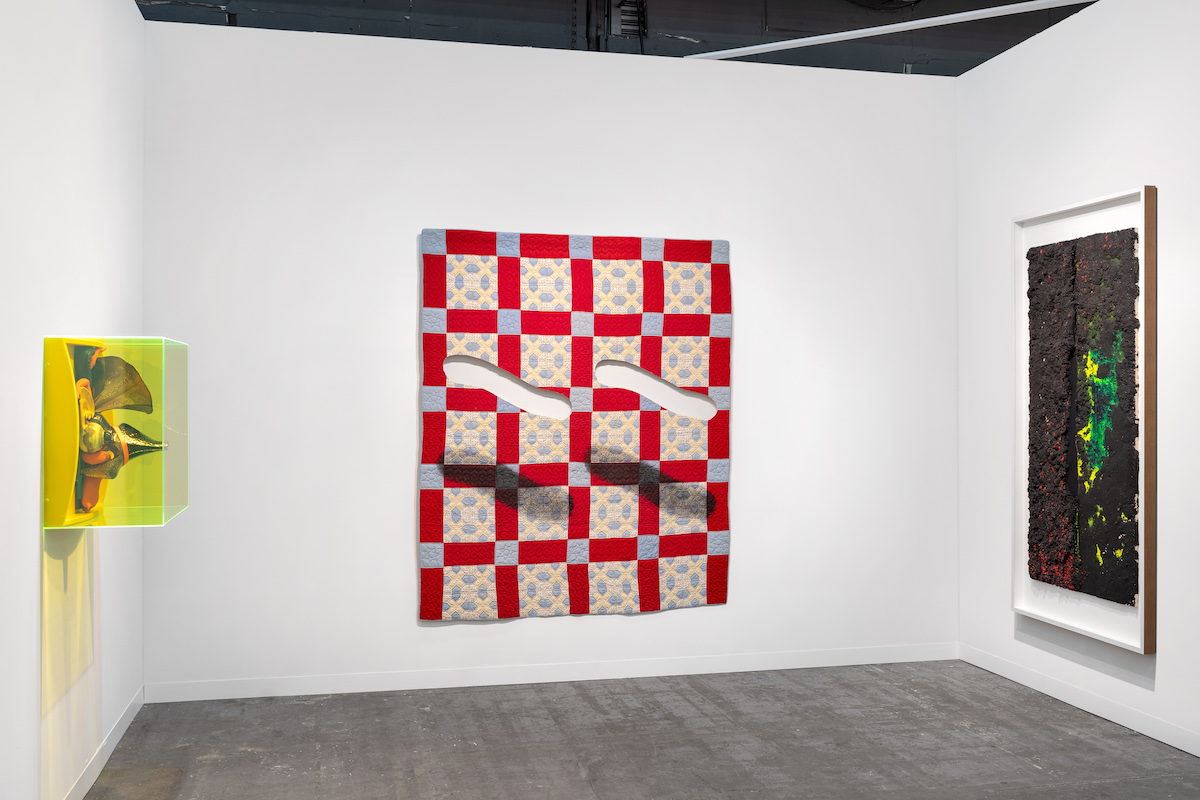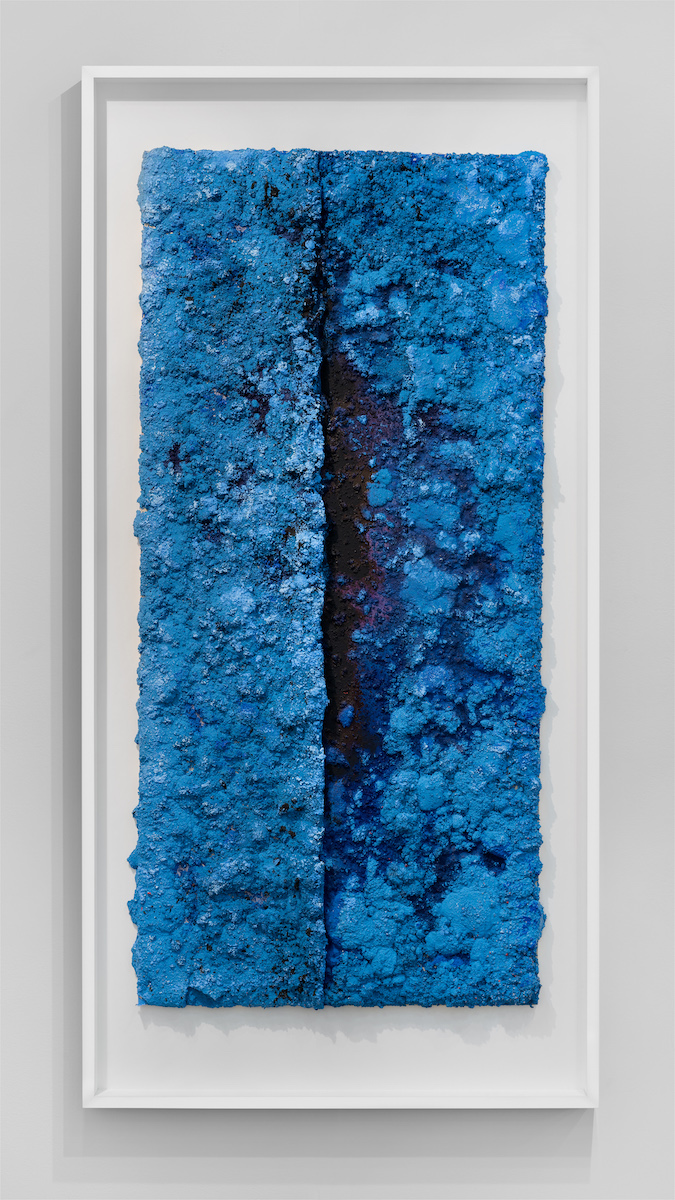The Armory Show
March 5 – March 8, 2020
David Castillo Gallery presents a three-person exhibit at The Armory Show 2020 featuring works by Sanford Biggers, Pepe Mar, and Vaughn Spann.
Evoking a long history of non-representational art from the last century, new abstraction drives the aesthetic and thematic currents of the booth presentation. Troubling the legacies of Modernism and Post-War art, Biggers, Mar, and Spann each blend formalist influences with subjectivities that render their works personal, intimate, and beholden to the layered narratives from which each artist draws influence. Form, line, and color vibrate rhythmically across the artists’ respective practices, imbuing their works with an affective formal presence that betrays three different, introspective approaches to their medium. Venturing into novel and forward-looking aesthetics, Biggers, Mar, and Spann treat sculpture, assemblage, and painting as media to be revisited, reinterpreted, and redefined against the pressing practices and questions of our age.
Sanford Biggers’ lush, hard-edged abstractions bring together the complex yet decorative geometries of antique quilts into conversation with the angular, shape-making process of origami. Emblematic of his practice, Biggers has long used these quilts as a material that he readily cuts, paints, sews, and collages into forms which evoke the history of African American experience in the United States; on a research trip where he traced locations along the Underground Railroad, the artist learned that quilts were commonly used as signposts to mark safe houses for those escaping northward away from slavery. He layers these visual and historical references in richly patterned works that do not treat history as unchangeable and precious, but as a dynamic substance to be actively mined and given form.
Tracing the provenance of his materials to a diversity of sources including thrift shops and the image archive of his own 15-year career, Pepe Mar creates large-scale assemblages that nod towards the history of his practice interwoven with stories of landmarks and figures that have impacted his life and career. These works often feature loosely anthropomorphized figures—collaged from found objects—that Mar refers to as Paprikas; these entities are part of an invented mythology which unfolds across the artist’s works where each Paprika consumes and embodies the abounding visual references from which its form is composed, such as in Salon Paprika, a new large-scale assemblage piece, made in part of many individual collage works.
In a body of work situated at the precipice between personal and collective experience, Vaughn Spann produces distinctly textured paintings where form gives way to feeling. Incorporating visual and tactile references throughout his work which call attention to his own identity, Spann’s practice elicits a tension within abstraction. Never quite rendering the body in the abstract works, Spann suggests a human presence hidden throughout formal gestures of color and texture.
Biggers, Mar, and Spann treat the formal qualities of their works as containers for contextual and subjective meaning. Redefining a relationship to abstraction, each artist approaches form, line, and color as vehicles for conveying overlooked histories, both personal and universal.


















